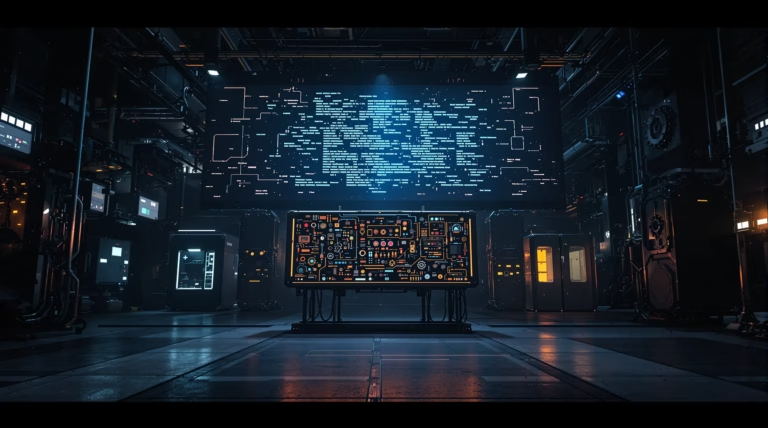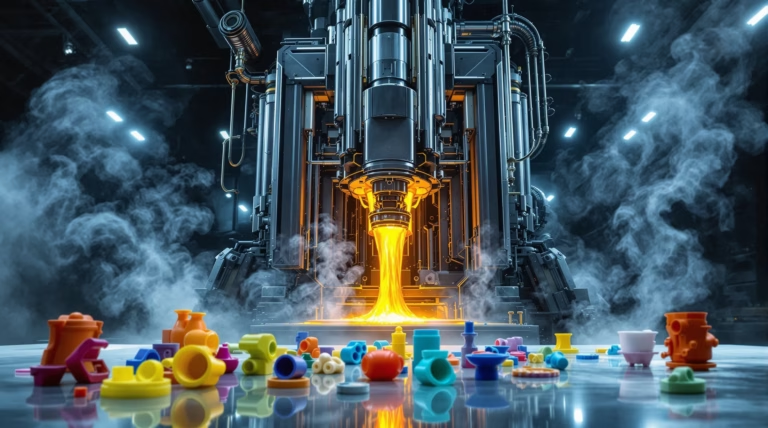CNC Machining: A Comprehensive Guide to Understanding the Process
Discover the revolutionary world of CNC machining, where precision meets automation to transform manufacturing processes. Whether you’re an industry professional or simply curious about modern production methods, this comprehensive guide will walk you through the essentials of Computer Numerical Control technology.
What is CNC Machining?
CNC machining (Computer Numerical Control machining) represents a sophisticated manufacturing process where computers direct production machinery movements. This advanced technology converts raw materials – including metals, plastics, wood, and composites – into precisely crafted components through programmed instructions, eliminating the need for direct manual operation.
The technology’s impact on modern manufacturing has been transformative, enabling the creation of complex components with:
- Exceptional accuracy and repeatability
- Minimal human error
- Increased production efficiency
- Consistent quality across large production runs
- Capability to create intricate designs
The Basics of CNC Technology
CNC technology operates through three essential components working in harmony:
- Computer controller – the system’s brain interpreting commands
- Machinery – executing the physical operations
- Software interface – bridging the controller and machinery
Modern CNC systems utilize CAD (Computer-Aided Design) and CAM (Computer-Aided Manufacturing) software. Engineers initiate the process by creating digital 3D models, which CAM software translates into precise machine instructions, ensuring exact replication of complex components.
How CNC Machines Work
The CNC machining process follows a systematic workflow:
- Creation of detailed digital designs using CAD software
- Generation of toolpaths and G-code through CAM software
- Controller interpretation of G-code instructions
- Machine execution along multiple axes
- Real-time monitoring and adjustment through sensors
Types of CNC Machines
CNC technology powers various specialized equipment, each designed for specific manufacturing requirements. These machines share the foundation of computer-controlled automation while offering unique capabilities for different production needs.
CNC Milling Machines
| Type | Configuration | Best Applications |
|---|---|---|
| Vertical Mills | Vertical axis rotation | Detail work, engraving |
| Horizontal Mills | Horizontal axis rotation | Heavy cutting operations |
| 5-axis Mills | Multi-directional movement | Complex contoured surfaces |
CNC Lathes and Turning Centers
CNC lathes specialize in creating cylindrical components through a unique process where the workpiece rotates against stationary cutting tools. Modern turning centers feature:
- Automated tool changing systems
- Live tooling capabilities
- Multi-tasking functionality
- Single-setup completion capability
- High-volume production efficiency
Other CNC Machine Types
The CNC machining landscape extends beyond traditional milling and turning with specialized equipment designed for specific manufacturing challenges. Here are the key specialized CNC machines:
- CNC Routers – feature high-speed spindles and large work areas, optimized for wood, plastics, and aluminum sheet processing
- Plasma Cutters – utilize high-temperature plasma arcs for cutting conductive materials, essential in steel fabrication
- Electric Discharge Machines (EDM) – employ electrical discharges for precise material erosion:
- Wire EDM – uses thin wire electrodes for intricate shapes
- Sinker EDM – utilizes shaped electrodes for complex cavities
- CNC Grinding Machines – deliver superior surface finishes for hardened materials
- Laser Cutters – provide non-contact cutting with minimal heat-affected zones
Materials Used in CNC Machining
CNC machining’s versatility shines through its ability to process diverse materials for precision components. The technology serves as a cornerstone across industries, from aerospace to consumer electronics, with material selection impacting machining parameters, tool choice, and manufacturing approach.
Common Metals for CNC Machining
| Metal Type | Key Properties | Primary Applications |
|---|---|---|
| Aluminum 6061 | Lightweight, corrosion-resistant, excellent thermal conductivity | Heat dissipation components, outdoor applications |
| Brass | High electrical conductivity, corrosion resistance | Electrical components, decorative hardware |
| Stainless Steel | High strength, corrosion resistance | Medical instruments, food processing equipment |
| Titanium | Superior strength-to-weight ratio | Aerospace, high-performance applications |
Plastics in CNC Machining
- Common Engineering Plastics:
- ABS – impact resistant, ideal for prototypes and consumer products
- Nylon – exceptional toughness, perfect for bearings and gears
- Delrin (acetal) – high stiffness and dimensional stability
- High-Performance Plastics:
- PEEK – heat resistant to 480°F, suitable for aerospace and medical implants
- PVC/CPVC – excellent chemical resistance for fluid handling
- HDPE – FDA compliant with strong chemical resistance
- LDPE – flexible with high impact resistance
Applications of CNC Machining
CNC machining has revolutionized manufacturing through its precision, consistency, and capability to produce complex components. The technology delivers unmatched quality in both high-volume production and custom one-off components, continuously evolving through advances in multi-axis capabilities and automation systems.
The integration with digital manufacturing workflows has expanded CNC applications beyond traditional manufacturing, enabling the production of increasingly sophisticated components across emerging industries. This adaptability, combined with consistent quality and efficiency, has established CNC machining as a cornerstone of modern manufacturing technology.
CNC Machining in Aerospace
The aerospace industry represents one of the most demanding applications for CNC machining, where precision tolerances and material integrity directly impact safety and performance. Aircraft components require exceptional dimensional accuracy—often within thousandths of an inch—while maintaining perfect consistency across production runs.
- Critical Components:
- Turbine blades with complex geometries
- Engine mounts requiring high strength
- Structural elements from high-performance alloys
- Satellite components for space applications
- Rocket engine parts with precise specifications
Space exploration technologies particularly benefit from CNC precision manufacturing. Fuel injection systems with intricate internal channels and cooling pathways are manufactured through 5-axis CNC machining, allowing tools to approach the workpiece from multiple angles. The aerospace sector’s early adoption of CAM technology, exemplified by Pierre Bézier’s UNISURF system at Renault in the 1960s, established foundations for modern aerospace manufacturing processes.
Medical Applications of CNC Machining
| Application | Requirements | Key Features |
|---|---|---|
| Surgical Instruments | Surgical-grade stainless steel | Flawless surface finish, exact dimensions |
| Orthopedic Implants | Titanium alloys, medical polymers | Complex geometries, porous structures |
| Patient-Specific Implants | CT/MRI scan data integration | Custom components, precise accuracy |
Industrial Uses of CNC Machining
- Automotive Industry:
- Engine components with tight tolerances
- Transmission parts for optimal operation
- Precision fixtures from various alloys
- Energy Sector:
- Oil and gas valves for extreme environments
- Pump components with exceptional durability
- Drill components for harsh conditions
- Additional Applications:
- Consumer electronics casings and heat sinks
- Agricultural equipment components
- Robotics systems integration
- Heavy machinery parts
Advantages and Challenges of CNC Machining
CNC machining combines automation, precision, and repeatability in ways traditional machining methods cannot match. As computing power increases and software becomes more sophisticated, CNC systems handle increasingly complex geometries and production requirements. However, manufacturers must carefully balance design complexity, material selection, production volume, and cost considerations when planning manufacturing processes.
Benefits of CNC Machining
- Precision and Consistency:
- Computer control eliminates human error
- Identical parts from first to thousandth unit
- Micron-level tolerances for critical components
- Consistent quality across all production volumes
- Operational Efficiency:
- Continuous operation with minimal supervision
- Automated tool changes and workpiece positioning
- Integrated quality control systems
- Quick production parameter adjustments
- Extensive material compatibility
Challenges in CNC Machining
- Geometric Limitations:
- Restricted tool access to complex features
- Difficulty with deep pockets and internal cavities
- Complex undercuts requiring special tooling
- Multiple setup requirements increasing costs
- Physical constraints of cutting tools
- Investment Considerations:
- Substantial initial machinery costs
- Programming expertise requirements
- Tool selection and operational training
- Regular maintenance and calibration needs
- Higher costs for small production runs
Quality Assurance in CNC Machining
Quality assurance forms the cornerstone of CNC machining operations, ensuring manufactured parts meet exact specifications and industry standards. Modern manufacturing facilities implement sophisticated quality control protocols that span from material verification to final inspection, particularly crucial in aerospace, medical, and automotive sectors where component reliability is paramount.
Standards and Certifications
| Certification | Application | Key Requirements |
|---|---|---|
| ISO 9001:2015 | Global Standard | Documentation, process control, continuous improvement |
| AS9100D | Aerospace/Defense | Risk management, configuration control, special process validation |
| ISO 13485 | Medical Devices | Regulatory compliance, risk management |
| IATF 16949:2016 | Automotive | Defect prevention, variation reduction |
Ensuring Precision and Safety
- Precision Measurement Systems:
- Coordinate measuring machines (CMMs) with 0.001mm accuracy
- Optical measurement systems
- Surface roughness testers
- Digital model comparison capabilities
- Continuous parameter refinement
- Safety Protocols:
- Material traceability systems
- Non-destructive testing methods
- Ultrasonic inspection procedures
- X-ray analysis capabilities
- Comprehensive documentation requirements







